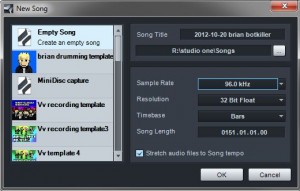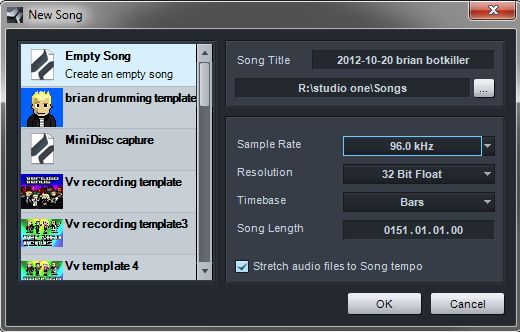32 Bit Float Recording; it sounds a bit odd, and many people don’t know what it means with respect to a Digital Audio Workstation like Pro Tools, Cubase, and etc. Â So, let’s talk about 32 bit float ,and why it can help your audio productions. Â 32 bit float recording is very important in today’s digital audio setups.
First, some math
It’s important to know what bit depth and sample rate are, and how they interact with each other.  Bit depth is the number snapshots of your audio that you have to capture while recording.  The sample rate designates how many times audio is sampled per second.  Put these two together, and you have sample and bit rate, which affect your audio quality.  More snapshots = more audio quality. 32 Bit Float Recording pays close attention to this.
A 32 bit floating point audio file has the potential to house more audio data than a 16 or 24 bit file.  But, how much?  Well, a 24 bit audio file has a dynamic range of about 145dB.  The Dynamic Range of a 32 bit file can range to about 1600dB.  So what does that mean?  It means, simply, that there is more audio data to be processed by your audio workstation and its plugins after you’ve recorded it.  The thing is, your audio interface probably can’t record at 32 bit, because there are not audio devices (currently) that support true 32 bit recording.  That’s why it’s called floating point – because that 32 bit information is artificially added to the recorded file after it has been recorded.  Despite this, there are still many reasons to work at 32 Bit Float Recording floating point in your sessions.
What does 32 bit floating point offer?Â
Simply put, if an audio file has more data associated with it, there is more data to be processed by your DAW or your plugins. Â A wider dynamic range means more audio to be processed, which can lead to better and more accurate mixing. Â You won’t hear the difference between a 24 and 32 bit file immediately, because there’s only so much your ears can hear (you’re only human, after all), but it’ll affect your ability to mix and master properly. Â Audio clipping can also be reduced by the greater dynamic range, which also equals better audio quality.
How do you use it in your DAW?Â
Using 32 bit floating point is pretty easy; as long as your DAW supports it, you can select 32 bit float in your session setup. Â Here’s a picture of the song setup in Presonus Studio One, which allows you to record at 32 bit floating point:

As long as your DAW supports 32 bit floating point, and your audio interface can work with it as well, it makes sense to record at 32 bit floating point.  Unfortunately, you’ll lose some of that bit depth when you mix your audio down to a CD or MP3 quality file; that’s because there’s currently no high-resolution audio players in the commercial market.  But, that may change someday. For now, it never hurts to get the best quality that you possibly can.  32 bit float recording can help you get the extra resolution you need for great audio quality, so use 32 bit float recording whenever you can, you’ll find that 32 bit float recording is very important!
I hope this has been helpful to you! Get at us anytime with questions at 1.855.553.7205. Â Thanks for reading!

